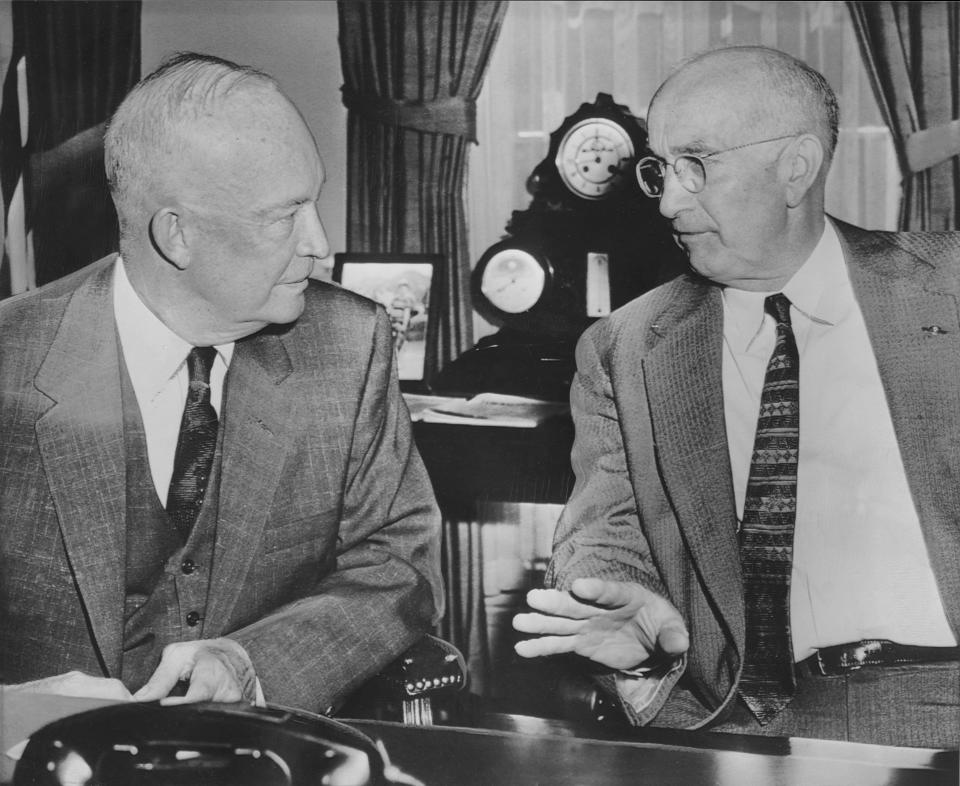What is cardiac rehabilitation and why is it important after a heart attack? What to know
Decades ago, it was assumed that age and poor heredity were the causes of heart disease. In other words, lifestyle was not on the radar screen. However, after World War II, the incidence of heart disease shot up dramatically, causing experts to question whether lifestyle, especially changes in lifestyle following the war, might be a factor.
In an attempt to determine the impact of lifestyle on heart disease, the Framingham Heart Study was initiated in 1948. The town of Framingham, Massachusetts, was chosen because it represented a good cross-section of the American population. There, 5,209 residents volunteered to undergo a detailed battery of medical tests periodically. There was no intervention, and folks were instructed to live their lives as usual. The scientists in charge of the study hoped that over the years, patterns would emerge among those who developed heart disease that would differ from those who remained healthy.
Prior to the release of the first research findings, a national event of monumental proportions occurred, making the Framingham Heart Study even more important.
When President Eisenhower had a heart attack

In 1955, President Dwight “Ike” Eisenhower had a massive heart attack. This focused attention on heart disease, but, again, lifestyle was not considered a factor as nothing had been reported from the Framingham Heart Study. That’s too bad because Ike could have illustrated how to destroy your heart with an unhealthy lifestyle that included smoking several packs of cigarettes a day.
The first scientific report on the Framingham data was published a few years later. It showed that residents who smoked, had high blood pressure, and/or high serum cholesterol levels were at increased risk for heart disease. This laid the groundwork for what became the “multiple risk factor hypothesis” which was later expanded to include lack of exercise, diabetes, obesity, and psychological stress. These were characterized as risk factors that could be changed.
Additional “fixed” risk factors included a family history of heart disease, increasing age, gender (men tend to have heart attacks at a younger age), and race (Black people and native Americans tend toward a higher incidence of heart disease than white people).
In Ike’s day, treatment for heart attack was pain management and rest. Nothing was done to improve heart function. This means if during a heart attack, 5% of the heart muscle died, the heart would be less effective in circulating blood throughout the body. Worse, complete rest was prescribed from that point on which easily could lead to even less functional capacity of the heart.
No attempt was made to shift to a healthy lifestyle and there wasn’t even a thought that a damaged heart could be rehabilitated with exercise.
What is cardiac rehabilitation?

It wasn’t until the mid-1960s that thinking began to change toward rehabilitating the heart with exercise. This means if 95% of the heart remains intact after a heart attack, exercise can strengthen the heart muscle to be as effective as the original 100%. However, the exercise dose must be precise and followed closely. If exercise is too intense, it could bring on another heart attack. Conversely, if exercise is not sufficiently intense, it won’t strengthen the heart muscle. This emphasizes the importance of testing by cardiovascular professionals who then craft an individualized exercise prescription conducted at a specific heart rate.
Stage 1 of cardiac rehabilitation entails close monitoring of all exercise and typically occurs in the hospital. Heart rate and blood pressure are measured constantly to ensure close adherence to the exercise prescription. Stage 1 generally lasts about 12 weeks, then the patient graduates to Stage 2. There is still an emphasis on the exercise prescription, but monitoring is less formal with spot checking, and exercise does not have to be confined to the hospital. This phase can last months and depends on the confidence of the patient to graduate to Stage 3 with less supervision and self-monitoring.
CARDIAC REHAB “FINALLY” COMES TO LOUISVILLE
As a graduate student in the Human Energy Research Laboratory at the University of Pittsburgh, I spent five years heavily involved with a cardiac rehab program that spanned several sites across town and served hundreds of patients. Then I took a job at the University of Louisville in 1973 and began establishing a Physiology of Exercise laboratory. I also looked forward to getting involved with cardiac rehab efforts in Louisville, but I couldn’t find any.
I contacted the local American Heart Association and was told there were no such programs in Louisville. I asked if they would be interested in starting such a program. The answer was no. I asked to address the Board, and after a considerable delay, I was granted permission.
I sat through the meeting, and then at the end, I was introduced. I barely got the words out of my mouth about starting a cardiac rehab program in Louisville when a board member, a cardiologist I later learned, stood abruptly and scoffed: “Exercise for heart attack patients is ridiculous! Meeting adjourned!”
I was speechless.
Thankfully, a different cardiologist heard about this and suggested that maybe, working together, we could get something done. He added it would be an uphill battle as the cardiologist who slammed me was apparently considered the local leader in the field, but establishing a cardiac rehab program in Louisville was the right thing to do. Long story short, it took quite a while, but not only did we get the first cardiac rehab program off the ground, the AHA funded it.
Thinking back on this experience, I am reminded of the words of Arthur Schopenhauer, a famous German philosopher who once said: “All truth passes through three stages. First, it is ridiculed. Second, it is violently opposed. And third, it is accepted as self-evident.”
Indeed, although the notion of cardiac rehab exercise in Louisville was ridiculed at first, then opposed, today it is taken for granted with sites all over town.
Reach Bryant Stamford, a professor of kinesiology and integrative physiology at Hanover College, at stamford@hanover.edu.
This article originally appeared on Louisville Courier Journal: What is cardiac rehab and why is it important after a heart attack?

